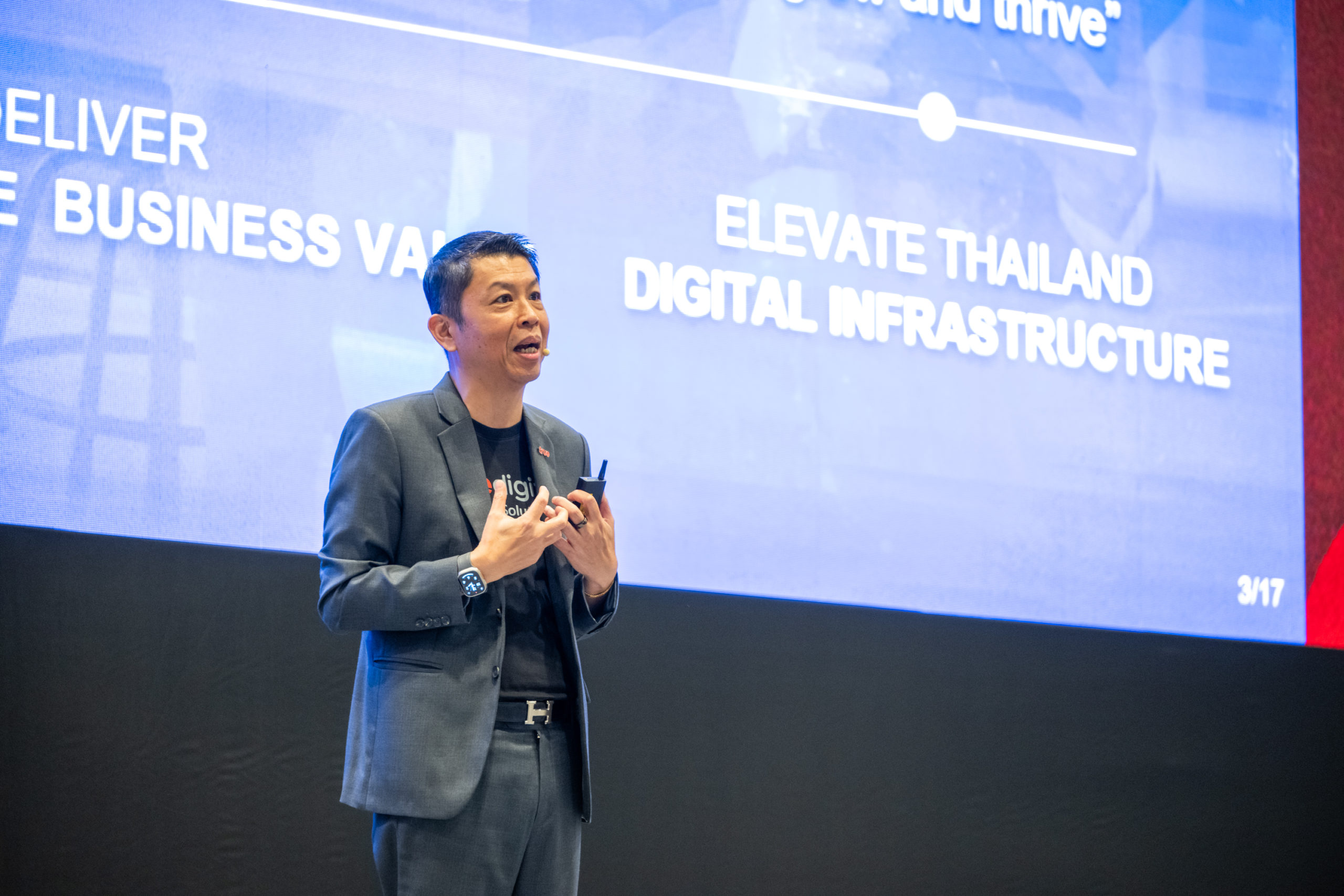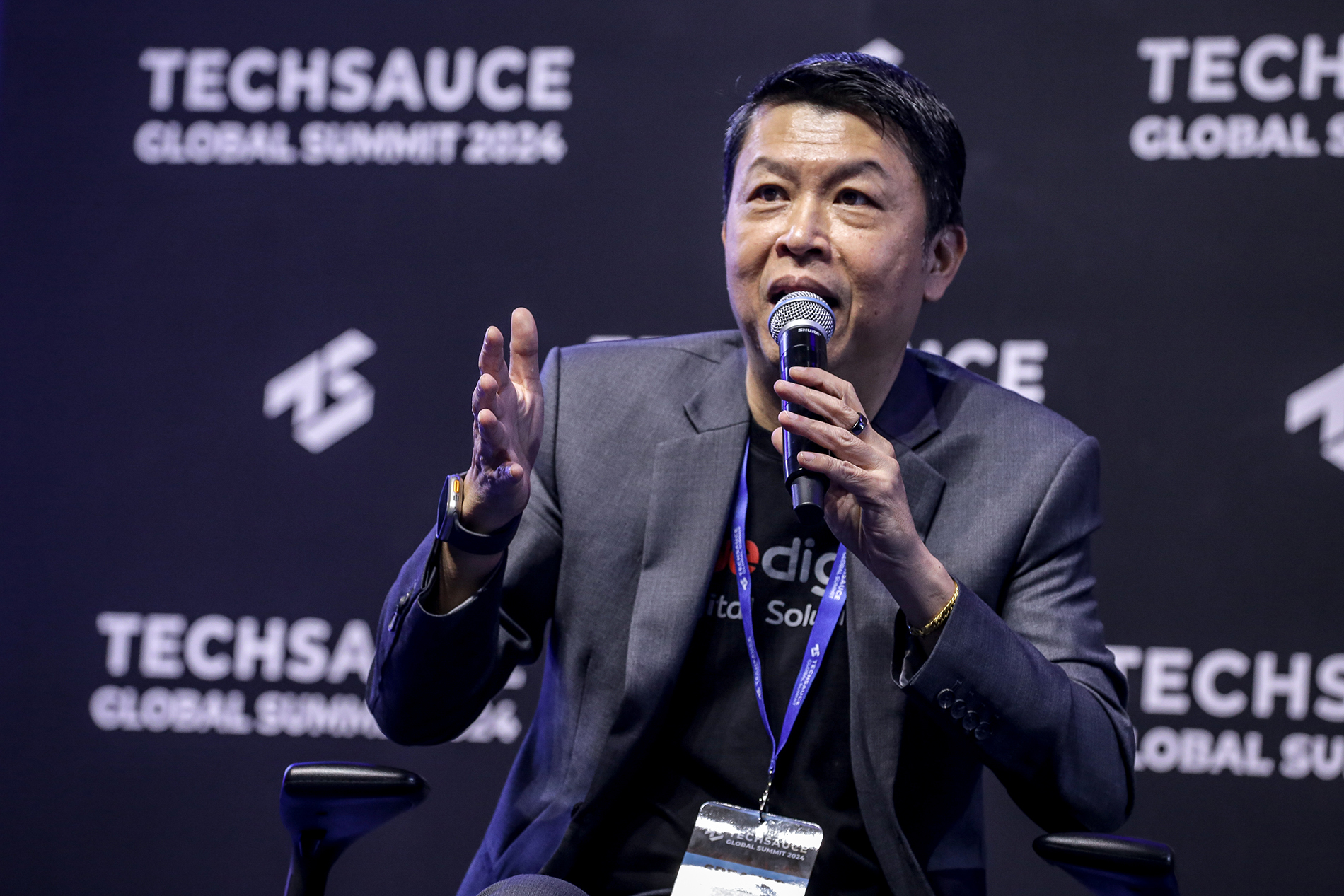Since the emergence of the Internet that connects all over the world, the technology paradigm has completely changed. Digital transformation has appeared with fast growth of the PC industry. The world of technology continued to develop until reached another important turning point which was the invention of Apple’s iOS smartphone marked the beginning of the use of technology in business transformation. There are many global businesses that emerged and used 100% technology to drive their business, such as Facebook, Airbnb, and Netflix. Until today, we can call the era of “AI”.
“We are in the era of AI, which actually is another era of digital, but it is an era that creates great changes due to the speed of digital facing and creating bigger, faster and more impact.” Ekaraj Panjavinin, Chief Digital Officer, True Corporation Plc. points out the importance of AI during the keynote speaking session “Revolutionize Your Business Transformation with AI First Organization and Real-World Used Cases” at MarketingOops Summit 2024.

Digital Transformation vs. Business Transformation
Business transformation didn’t just happen. Transformations, in the past, have had different paces and speeds in each phase as markets, consumers, and competitors changed, as well as there are uncertainty factors that cannot be controlled. Business transformation, therefore, is very important. The organizations cannot stop transforming; on the contrary, they must continue to proceed transforming all the time and adopt technology with fast adaptation and maximum efficient utilization.
Digital transformation is the use of technology to expand, develop the organization and build new businesses. Therefore, digital transformation and business transformation, nowadays, are almost united. Organizations cannot transform their business without using digital and technology.
Unveils business transformation framework, paving the way for sustainable business value
Ekaraj emphasizes True Digital Group’s ambition to enable business transformation towards Sustainable Business Value, which is to create sustainable organization value. It’s not just about ESG but focuses on growing and building long-term value for the organization. The business transformation framework can be easily applied with any organization.
Business transformation consists of three key elements which are
- Technology – As there are many and various technologies, the organization must therefore choose appropriately. Good technologies should be seamless, simplify, automation, Flexibility, Agility and no Proprietary.
- Data – Organizations should increase data utilization to drive their business as the customer segment is continuously getting narrower. Data helps improve customers understanding at the nano segmentation level and enhance channels selection to reach the right target customers. However, today’s world of data has changed. There are multiple data sources; internal data, external data and things data, the more data is combined, the more accuracy in doing business. Importantly, the data platform is needed for structure, organize, and integrate in order to be ready to use ang allow AI to learn immediately.
- People – Employees must use technology for the benefits of their working and the organization and have both hard skills and soft skills, especially the top 5 soft skills including analytical thinking, creativity, adaptability, leadership, and collaboration.

In addition, the organization must also have an Operating Process, a process or model for conducting business, and Change Management for everyone in the organization to understand and jointly adapt technology in order to ensure outcomes from business transformation, including Product Reinvention – reinvent existing products or services or invent new products or services that best match with customers’ needs, Optimize Operating Expenses – monitoring and controlling expenses, Empowering Employees – providing tools and technology for employees to use along with creating an understanding of business landscape, the market, and technology utilization leads to products and services offering that meet the needs of customers for the right target segments, and Profitable Growth
Deep dive into business transformation in the AI era
AI will be an important technology that drives business transformation, increasing organization efficiency in 8 areas which are fast efficiency, precise decision, thriving customers, innovation at speed, cost optimization, predictive power, competitive edge, and new revenue streams.
AI will become the center of three key elements in business transformation: technology, data, and people.
- AI – Center of Technology; improving decision making, supporting innovation and development, and enhancing customer experience.
- AI – Center of Data; Automatically identify and understand different data sources, assess data quality, explore largest data sets, build sophisticated predictive model, analyze data streams in real time. Moreover, an integration of data and AI will lead to new insights that can actually drive business.
- AI – Center of People; uplift skill sets for employees to become digital citizens in order to drive AI-Ready organization
Integration of technologies, transforming to Telco-Tech
Business transformation is not just about products or customer service, but the organization itself must transform as well. True Corporation has transformed into a telecommunications-technology company, offering not only a network infrastructure but also digital services to deliver greater benefits to customers and better response to customer needs comprehensively on top of communication services.
For the element related to “people”, True builds a Digital-Ready First Organization by implementing three core actions which are
- X-Functional – being agile organization that changes from siloed work to interdisciplinary collaboration
- Evidence-Based – from leader-driven decision to data-driven decisions, using 100% in business decision making
- Experimental – from rigid and risk averse to agile, experimental and adaptable
In addition, True has further its Digital-Ready First Organization to become an AI-First Organization through people development programs covering both hard skills and soft skills, creating 2,400 digital citizens in 2024, and using AI to create automation system for repetitive rule-based tasks. All of this must be done continuously and needs the support by the management team to ensure that we build a culture of people to be 100% Digital AI.
The next level of AI in 2050
AI has been used and generated various advantages. It is one of the most advanced technologies that creates changes with fast and strong impact. It is expected that in the next 20-25 years, AI will continue to develop and create more benefits on 10 tracks, including:
- Unimaginable problem-solving skills – AI will solve complex problems through data analysis and learning potentially such as analyzing X-Ray film and disease diagnostics.
- Sophisticated interactions – AI interactions will become companions for conversation through smartphone, console in cars, television, robot and others.
- Hyper connected world – AI will connect devices and systems with data analytics
- Hyper-personalized education – AI will tailor education to maximize the potential.
- Quantum powered AI – Quantum computing will empower AI, leading to advancement.
- AI will prolong life – AI will analyze medical data for personalized treatment plans.
- Enhanced biotechnology – AI will identify disease-related genes, leading to new treatments and therapies.
- Advancement in brain computer interface (BCI) – BCI will enable thought-controlled devices and potentially enhance human abilities.
- Self-healing AI – AI will self-detect and fix errors, improving reliability and reducing downtime.
- The AI Singularity – AI could surpass human intelligence, exponentially improving itself and augmenting human capabilities.




